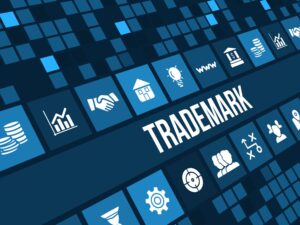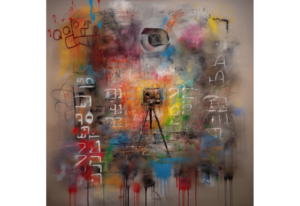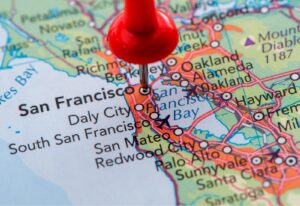What is a Copyright?
The word copyright is a legal term of art used to identify the type of protection granted to an author, or creator, of certain types of creative works. When you set out to write a book, or a screen play, what you created, what you typed into your computer, or wrote out on a piece of paper, that creation likely is protected under copyright. And it happens automatically. If you have ever written an essay, painted a picture, recorded a song on your phone, or took a photograph, you likely have a copyright.
A copyright is a constitutional gift backed up by international treaty to ensure that you, as the creator of your creative work, enjoy a range of protections that limit what other people can do with it. It also incentivizes you to monetize and distribute your work to the public, because you can assign some of those rights to others who will pay you for it. Once you have a copyright, the protection usually lasts for your entire life, plus an additional 70 years.
Legally speaking, a copyright is the fixation in a tangible medium of expression a work of authorship. But what does this mean? It means that everything from computer programs, books, poems, blog posts, movies, architectural works, and more, from the moment they are placed on or in something tangible, like a piece of paper, or the memory in a computer, are a very real and very valuable personal property right. In essence, you own it.
What is Not a Copyright?
However, there are some limitations. To have a copyright, what you have created must be an original work of authorship with some modicum of creativity. Hence, it must in some respect have originated with you, the author, and not someone else. Likewise, it must be at least slightly creative.
Copyrights do not extend to individual ideas, facts, procedures, methods, concepts, principles, or discoveries. This is called the idea/expression dichotomy, which basically provides copyright protection for the expression of ideas, rather than the ideas themselves. Facts themselves are not protectable, but the arrangement of them could be.
The Exclusive Rights That Come With a Copyright
The rights that come with a copyright are considered exclusive because they are held by the copyright owner, and only the copyright owner has the right to use their copyright in certain exclusive ways.
The exclusive rights that come with your copyright include the following:
- The right to reproduce your copyright. This includes making copies or reproductions of your creative work.
- The right to create derivatives. This means the right to create new modified versions of your work that are based on your original.
- The right to distribute copies to the public, including for sale.
- The right to perform your work publicly in the case of motion pictures, musical, and other applicable creative works.
- The right to display your work to the public.
- The right to perform your work publicly via digital audio transmission in the case of sound recordings.
But with all these copyrights flying around, how are new works created without violating the rights of others? The courts have devised a way to determine if a copyright is actually infringing on the copyright of another, as well as a defense against copyright infringement. This defense so important to protecting innovation that it has been codified into law.
Copyright Infringement
To prove copyright infringement, a copyright owner must first show that they have ownership of a valid copyright. Next, the copyright owner must show the defendant had access to the creative work. And lastly, there must be substantial similarity between the allegedly infringing work and the copyrighted work.
But in most cases, to get in court and sue someone for infringement, you must first register your copyright with the copyright office. The process is fairly straightforward, and relatively inexpensive.
The meat of the copyright infringement analysis is substantial similarity. The Ninth Circuit Courts (Alaska, Arizona, California, Guam, Hawaii, Idaho, Montana, Nevada, the Northern Mariana Islands, Washington and Oregon) uses both an extrinsic and intrinsic test to evaluate the similarity of a copyrighted work with the allegedly infringing work.
The extrinsic test evaluates the similarity of the copyrighted work with the allegedly infringing work by reviewing the protected elements of the copyright holder’s creative expression. It also requires the removal of the unprotected aspects of the copyright. The remaining qualities are evaluated to objectively assess the similarities of the two works. Conversely, the intrinsic test is more subjective, and looks to a determination of the total concept and feel of the work from an ordinary person’s subjective impressions. Other circuits use different tests to evaluate substantial similarities, with some varying results, though the main focus, as you might expect, is how similar the works are to each other.
These days, many works are in some respect based on the prior works of others, whether that is music sampling, collages, fan fiction, or news reporting. Therefore, it is important to come equipped with a firm understanding of copyright’s fair use defense.
The Copyright Fair Use Defense
Copyright fair use is the right to use a copyrighted work without the permission of the copyright owner in some circumstances. We as a society benefit from the dissemination of new ideas, information, news articles, and creative works that are so transformative and recast, or are so valued, that they are deemed to fall outside the boundaries of copyright infringement under the fair use defense. The burden of showing that the use was in fact permitted falls on the alleged infringer. The Copyright Act explicitly provides the following fair uses do not constitute copyright infringement: criticism, commentary, news reporting, teaching, scholarship, and research.
The following factors are usually considered by U.S. courts when evaluating fair use:
- The purpose and character of the use, including whether such use is of a commercial nature or is for nonprofit educational purposes.
- The nature of the copyrighted work.
- The amount and substantiality of the portion used in relation to the copyrighted work as a whole.
- The effect of the use on the potential market for or value of the copyrighted work.
For example, an internet search engine’s utilization of thumbnail images that copied creative works were not infringement. Likewise, a music clip from a popular TV show was not an infringement when used in a different staged production. Even a TV database that made it possible for users to view portions of news clips was not an infringement. In the TikTok age, reproducing other people’s videos while commenting on them for comedic or critical purposes is also usually not an infringement, even if the entire video was reproduced. As such, copyright fair use has incredibly broad and expansive applications that ensure new works can be created and disseminated to the public.
Modern Enforcement of Copyrights
Technology has allowed for the quick and effective identification of potentially infringing works, whether they are reposted photographs, or sound recordings, for example.
One of the most common techniques used by copyright owners to enforce their rights is by sending a copyright infringement demand letter to alleged infringers. These letters commonly threaten legal action if the recipient fails to heed their demands or pay up. Some companies have even made a business out of scouring the internet for infringement, and monetizing unauthorized uses with after-the-fact licensing fees. Others enforce their rights by contacting internet service providers to have their copyrighted works removed from the internet. Some enforce their rights in court by bringing copyright infringement actions as discussed above.
Latest Developments
More recent technological developments, including the emergence of generative artificial intelligence (“AI”), stand to set the stage for further changes to how copyrights are created and enforced. Of particular interest, is who owns the copyrights of creative works created by AI. As it stands currently, if a work is created by AI without any human authorship or involvement, there is no copyright in the generated work, and it is said to be in the public domain.
If, however, there is some human involvement in the arrangement or creation of the creative work that is combined with AI created elements, the protectable aspects of the final product are owned by that human coordinator. It remains to be seen how advancements in technology such as this will continue to shape copyright ownership in the future, as AI is already being used to generate music, news reporting, videos, and gaming.
Conclusion
Copyright protection serves as the foundation of the intellectual property regime. It is both pervasive and accessible, granted to anyone creating original works of authorship who apply some creativity in their making. Whether you have authored your first book or made a musical medley with mashups from your favorite performing artists, it is important to have a basic understanding of copyright and what room you have to expand your creativity in new ways. It is also important to get permission whenever possible before using someone else’s creation. This way you can avoid the daunting prospect of getting sued in court and having to defend against the action by raising your fair use defense.
























